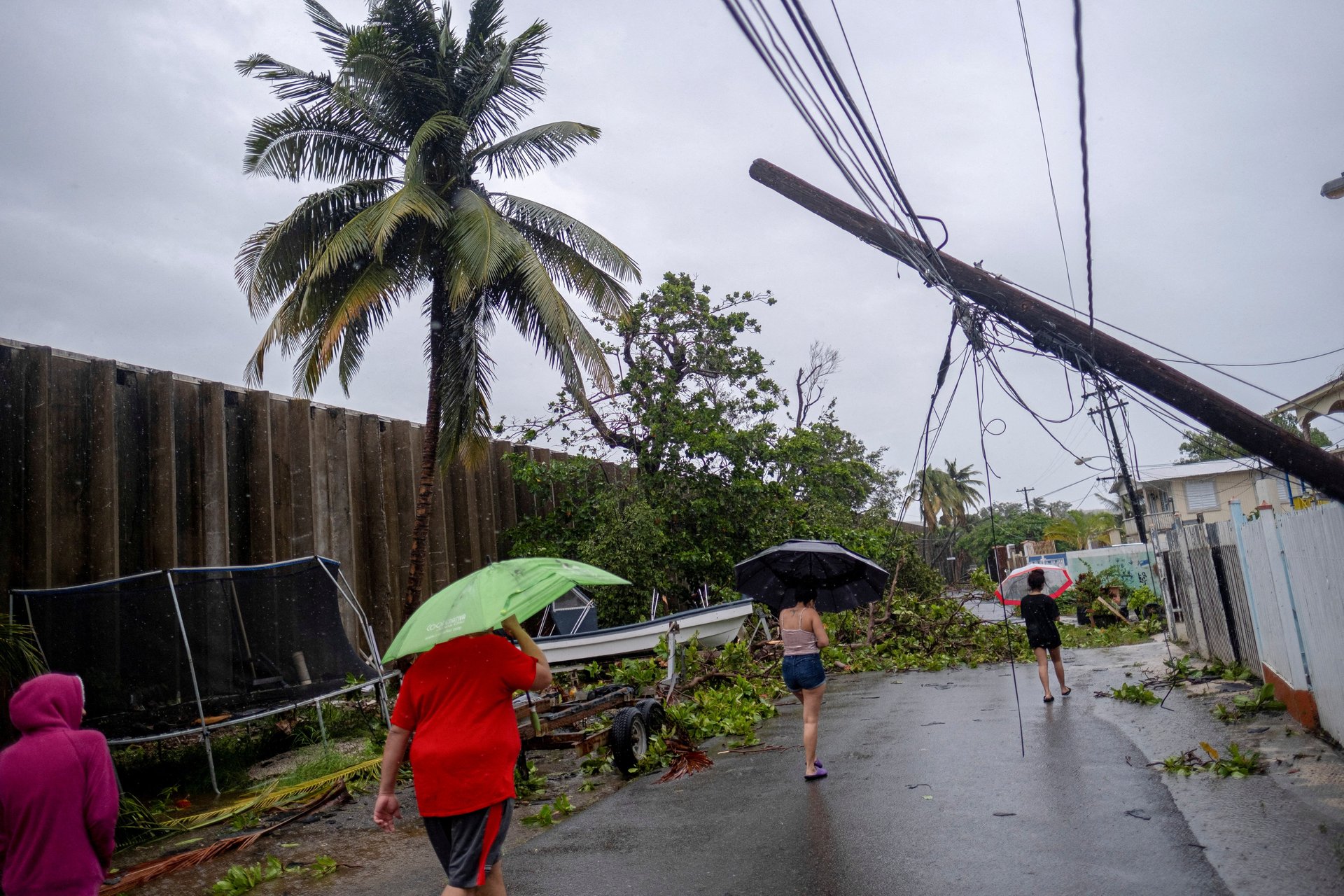Red tape and debt are prolonging Puerto Rico's blackouts
“People are moving in the direction of solar...but the government is not.”

When Hurricane Fiona struck Puerto Rico on Sept. 19, it damaged transmission lines and other power infrastructure, leaving more than a million people without electricity. The island’s electric grid has barely recovered from the catastrophic damage it suffered in 2017, when Hurricane Maria hit. Puerto Rico’s reliance on imported oil for electricity production is heavy, and the public utility is groaning under $8.2 billion in debt. As a result, Puerto Ricans have some of the most expensive and least reliable electricity in the US.
One of those waiting in the dark this week is Cathy Kunkel, the energy program manager at Cambio, a San Juan-based advocacy group focused on sustainable development. In Fiona’s immediate aftermath, she said, the only households to still have power are those with diesel generators or rooftop solar panels. Deploying many more of the latter, she said, could be “completely transformative” for an island on the front lines of climate disasters.
“Everyone in Puerto Rico wants rooftop solar, because the benefits are so obvious,” she said. “No one wants to depend on a grid that leaves them in the dark for a month.”
Why Puerto Rico doesn’t have more solar power
Yet solar amounts to just 2.5% of Puerto Rico’s electricity generation capacity. The first obstacle is cost: Rooftop systems on the island, which is on the outskirts of the global solar supply chain, can cost more than $20,000, close to the average annual household income there.
But the bigger obstacle is bureaucracy, Kunkel said. “People are moving in the direction of solar, especially since Maria. But the government is not.”
Puerto Rico was late to set a territory-wide renewable energy target, deciding in 2019 to generate 40% of its power from renewables (including wind and hydro) by 2025, up from 5% today. Earlier this year, during negotiations over restructuring the utility’s debt, regulators proposed implementing a tax on solar users that would go toward paying back bondholders and create a disincentive to defect from the grid. Those negotiations have stalled and the tax is off the table for now, Kunkel said, but the threat of it was enough to spook some potential solar customers.
Meanwhile, Puerto Rico has spent only about 19% of the $28 billion in federal recovery funds it received after Maria, with officials blaming staffing shortfalls in government offices and among construction contractors, as well as supply chain disruptions linked to the pandemic. LUMA Energy, the private company that took over much of the electric grid operation since Maria, has also been the frequent target of protests for being slow and ineffective in fixing problems with the grid.
The best thing, Kunkel said, would be to plow as much of the remaining money as possible into solar and batteries—before the next storm strikes. “There’s a historic opportunity to transform the grid,” she said. “The government hasn’t embraced that idea.”